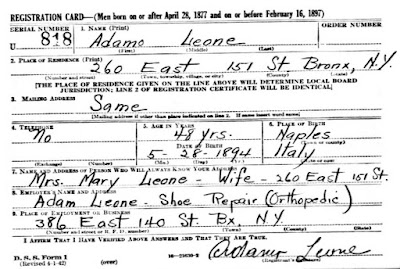I knew nothing about my grandfather's family when I started on my family tree. But I was determined to find his ancestors.
I spent years visiting a Family History Center to view microfilm from his town, ordered from FamilySearch.org. I wound up identifying ancestors born as far back as the late 1600s. That's so satisfying!
The process taught me how to piece together several generations of ancestors from foreign vital records.
 |
| This multi-generation chart is the tip of the iceberg. |
After all that work, I recently found Antenati—an online collection of Italian birth, marriage and death records. The website has high-resolution images of the exact records I viewed on crummy old microfilm projectors.
Now I'm ready to move on to my other ancestors. Using the GetLinks program, I downloaded every available vital record from three other towns.
Here are 5 steps for climbing your Italian family tree.
1. Start with your youngest ancestor
If it's available, jump into the year you believe your youngest ancestor was born. For this example, let's say you're searching for your great grandfather.
Many times there is a handwritten index at the end of each year's records. If not, you may have to go page-by-page. The reward is worth it: you will learn his parents' names.
2. Search for siblings
After you find your great grandfather's birth, search the surrounding years for his siblings. These records can provide more information, such as the name of one or both of the baby's grandfathers.
In the Italian towns I've researched, a handful of names are used again and again. It's confusing, to say the least.
To clearly identify parents, a birth record may say, for example, "Giuseppe Sarracino fu Giovanni". This tells us that Giuseppe is the son of the late Giovanni. If it said "di Giovanni" we would know Giovanni is alive, but "fu" means he has died.
Getting that additional name will help you go to the next generational level.
3. Search for the parents' marriage records
You've found your great grandfather's parents names. You've found birth records for several of their children. Now you can search for their marriage records.
Italian marriage records are much more than a simple marriage certificate. They are several pages long, including birth records for the bride and groom, and death records of their parents who died. If the bride or groom's father is dead, and their grandfather is also dead, you should see the grandfather's death record.
Do you know what that means? You could wind up with the names of the married couple's great grandparents!
4. Scour the death records
The names and birth years you've gathered so far will help you search for these ancestors' death records.
A death record can provide you with the deceased's parents' names and their spouse's name.
If you see the word "vedovo" or "vedova", the deceased was a widow. You can search for their spouse's death record, too.
If you see "in seconde nozze" after the spouse's name, the deceased was married twice. "In terze nozze" means they were married three times.
5. Trust the earliest-recorded age
Birth records are gold, but you won't be able to find one for every ancestor.
Let's say you're focusing on your 3x great grandmother. You don't have her birth record, but her age is recorded on her 8 kids' birth and marriage records.
When you do the math, the recorded ages don't always add up. She gets older, she gets younger…which is right?
In the 1800s in Italy, people didn't keep track of their vital information the way we do today. By the time a woman was 55, she may not be sure when she was born.
That's why I put my faith in the earliest-recorded age. When a 22-year-old woman gives birth for the first time, she is more likely to know her age than 25 years later when that baby is getting married.
Follow these 5 steps and you, too, can pull generations' worth of ancestors from the Antenati website.










